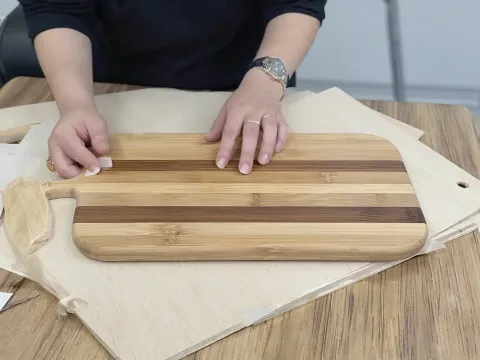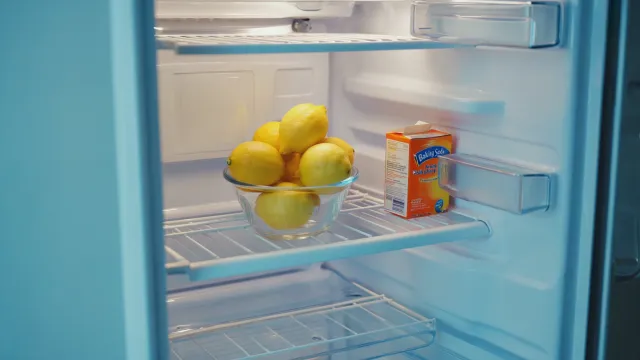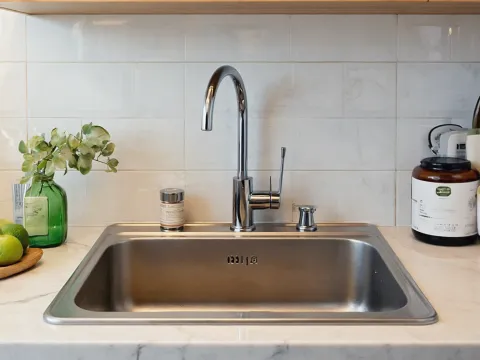Published on June 3, 2025
Last updated: June 3, 2025 · ⏱ 3 min read
Naturally Deodorize & Sanitize Your Wooden Cutting Board

Understanding the Importance of Cleaning Wooden Cutting Boards
Wooden cutting boards are a staple in many kitchens, valued not only for their aesthetic appeal but also for their durability and functionality. However, they can harbor bacteria and odors if not cleaned properly. Regular maintenance is crucial for ensuring that your cutting board remains hygienic and in good condition. Understanding the right cleaning techniques can help you extend the life of your board while also keeping it safe for food preparation.
Why Choose Natural Cleaning Methods?
Many people rely on chemical cleaners to sanitize their kitchen surfaces, but natural cleaning methods can be just as effective, if not more so. Natural cleaners are often safer for your health, better for the environment, and gentler on your wooden cutting boards. By using common household items, you can create effective cleaning solutions without the harsh chemicals found in commercial products. This approach not only promotes a healthier kitchen but also helps preserve the integrity of your wooden cutting board.
Essential Supplies for Cleaning Wooden Cutting Boards
Before diving into the cleaning process, gather the necessary supplies. You'll need:
- Warm water
- White vinegar
- Baking soda
- Lemon
- Olive oil or mineral oil
- A soft sponge or cloth
- A clean, dry towel
These items work together to effectively clean and maintain your wooden cutting board, ensuring it stays fresh and free of harmful bacteria.
Step-by-Step Guide to Cleaning Your Wooden Cutting Board
Cleaning your wooden cutting board involves several steps to ensure thorough sanitation without damaging the wood. Here’s a straightforward approach:
1. Rinse the Board
Start by rinsing your cutting board under warm running water. This initial rinse removes any loose food particles and helps prepare the surface for deeper cleaning. Avoid soaking the board, as excessive water can warp the wood over time.
2. Create a Cleaning Solution
Mix equal parts of white vinegar and water in a bowl or spray bottle. Vinegar is a natural disinfectant that effectively kills bacteria. For tougher stains or odors, sprinkle a little baking soda directly onto the surface of the board before applying the vinegar solution. Baking soda acts as a gentle abrasive, helping to scrub away stubborn residues.
3. Scrub the Board
Using a soft sponge or cloth, apply the vinegar solution to the board, scrubbing in the direction of the wood grain. This technique helps to lift stains and eliminates odors without scratching the surface. If you used baking soda, the gentle scrubbing action will also help to remove any lingering smells.
4. Rinse Again
After scrubbing, rinse the board thoroughly under warm water to remove any cleaning solution and debris. Ensure that all vinegar and baking soda residues are washed away, as they can negatively affect the flavor of food if left on the board.
5. Disinfect with Lemon
To further disinfect your board, cut a lemon in half and rub the cut side directly onto the surface. The citric acid in lemon not only acts as a natural disinfectant but also leaves a fresh scent. Let the lemon juice sit on the board for about 10 minutes before rinsing it off.
6. Drying and Conditioning
After rinsing, pat your cutting board dry with a clean towel. It’s important to ensure it’s thoroughly dried to prevent moisture buildup, which can lead to mold or warping. Once dry, apply a thin layer of olive oil or mineral oil using a soft cloth. This conditioning step helps to keep the wood hydrated, preventing it from cracking and prolonging its lifespan.
Maintaining Your Wooden Cutting Board
Regular cleaning and maintenance are key to preserving the quality of your wooden cutting board. Here are some additional tips to keep your board in top condition:
- Avoid soaking: Never soak your cutting board in water or put it in the dishwasher, as this can cause the wood to swell and crack.
- Clean after each use: Make it a habit to clean your board after every use, especially after cutting raw meat or fish.
- Store properly: Store your cutting board in an upright position or flat to prevent warping.
- Recondition regularly: Reapply oil to your board every month or whenever it appears dry to maintain its integrity.
Addressing Stains and Odors
Stains and odors can sometimes linger on wooden cutting boards, but there are natural remedies to tackle these issues. For stubborn stains, create a paste using baking soda and water, apply it to the stained area, and let it sit for a few minutes before scrubbing gently. To eliminate odors, a mixture of vinegar and water can be effective, as can the use of lemon juice.
When to Replace Your Wooden Cutting Board
Despite your best cleaning efforts, wooden cutting boards don’t last forever. Here are signs that it may be time to replace your board:
- Deep grooves or cracks that cannot be sanded down, which can harbor bacteria and compromise food safety.
- Warping or uneven surfaces that make cutting difficult and unsafe.
- Persistent odors or stains that remain even after thorough cleaning and deodorizing.
- Loose or splintering wood that poses a risk of contamination or injury during food prep.
Replacing your cutting board when it shows these signs ensures you maintain a safe, clean, and efficient kitchen workspace. Investing in a new board is a small step that goes a long way in supporting your cooking hygiene and overall kitchen experience.
FAQs About Wooden Board Cleaning

Written by Soufyan from GrowToGrub
Soufyan is a gardening educator and founder of GrowToGrub. Through simple guides, easy recipes, and practical life hacks, he helps everyday growers turn small spaces into sustainable, delicious, and chemical-free living.


